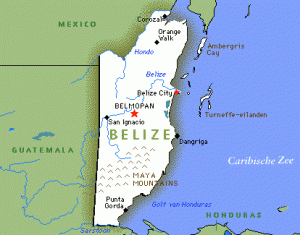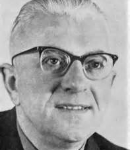The Belizean Garifuna ~ Organization Of Identity In An Ethnic Community In Central America
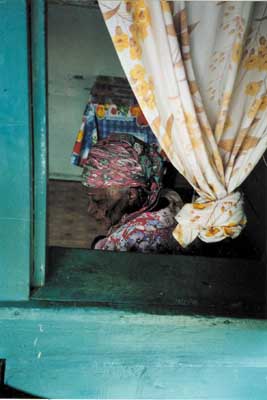 If the world had any ends, British Honduras would certainly be one of them. It is not on the way from anywhere to anywhere else’ (Aldous Huxley 1984:21).
If the world had any ends, British Honduras would certainly be one of them. It is not on the way from anywhere to anywhere else’ (Aldous Huxley 1984:21).
When I had to do fieldwork in the Caribbean region for my final research several years ago, someone from the department of cultural Anthropology in Utrecht in the Netherlands asked me why I didn’t go to Belize. My answer to his question was at that time quite significant: ‘Belize??’ I had no idea where it was and could not picture it at all.
Libraries that I visited in the Netherlands hardly provided any solace. Most of the books on Central America hardly mentioned Belize. Booth and Walker describe the position of the country as follows in ‘Understanding Central-America’: ‘Though Belize is technically Central America, that English-speaking microstate has a history that is fairly distinct from that of the other states in the region. At present this tiny republic, which only became formally independent from Great-Britain in 1981, does not figure significantly in the ‘Central American’ problem’ (1993:3).
Multi-Ethnic Belize
The fact that Belize receives little attention in literature on Central America underlines the peripheral position of the country in this region. Some authors qualify it as part of the Caribbean world; others primarily see Belize as a member of the British Commonwealth. Besides that it is also seen as part of the Central American context. The Formation of a colonial Society (1977) by the English sociologist Nigel O. Bolland was the first scientific work on Belize that I was able to acquire. The Belize Guide (1989) by Paul Glassman provided me with a tourist orientated view of this ‘wonderland of strange people and things’ (Glassman 1989:1). Collecting sustaining literature was and remains a tiresome adventure. Slowly but surely my list of literature expanded.
My knowledge of the region was limited. Reactions from others also confirmed that Belize is a country with a slight reputation. For example, I still remember being corrected by someone from a travel agency. After asking the gentleman if a direct flight to Belize existed, he answered somewhat pityingly: ‘Sir, you must mean Benin´. In my circle of friends, Belize also turned out to be unheard of. The neighboring countries Guatemala and Mexico are better known. An important reason for this is that the media informs people of the most important happenings in these countries. This information is often clarified using maps of the area on which Guatemala and Mexico, but also Belize, are marked. Nonetheless, time and time again Belize turns out to be a country that does not appeal to the imagination.
The comments I heard from tourists coming in from Mexico or Guatemala are notable. ´This is a culture shock´, ´where are the Indians´, ´this doesn´t look at all like Central America´, ´it´s surprising how well you can get by with English here, that was not like that at all in Mexico´. Many of the tourists that come from Mexico quickly go through Belize city on their way to one of the islands off the coast of Belize where they relax for a few days before going to Guatemala. Most of the tourists coming into Belize from Tikal (Guatemala) spend a night in San Ignacio, comment on the fact that everything is so expensive, and quickly travel on to Chetumal (Mexico) the next day.
Belize is a country that lies hidden between two countries with a certain reputation. I do not really think that it is an exaggeration to state that Belize is something of a fictitious end of the world, as formulated by Huxley. In order to obtain an impression of the country, in which this research took place, the next section gives a general idea of the topographic and climatic characteristics. Besides that, the compilation of the population, the constitutional and political situation, the economic position, the religious context and the multi-lingual structure of the country are discussed successively. Furthermore, it is essential to provide an outline of the historic context in which the various ethnic groups in Belize have taken in their place. In other words: How has this country come to be so multi-ethnic?
Belize, A Central American Country on the Periphery
On 21 September 1981, the former British Honduras becomes independent. This date is the formal end of a process of independence that took seventeen years. In 1964, British Honduras of the time received the right to an internal self-government and in 1973 the name of the country was changed to Belize. With an area of 22,965 km2, Belize is the second smallest country in Central America. El Salvador is smaller (21,393 km2), but has considerably more inhabitants with it’s population of 5.889,000. According to the census of 1991, Belize has just 189,392 (Central Statistical Office 1992). This comes down to eight inhabitants per square kilometer, whereas El Salvador has 275 inhabitants per square kilometer. With that, the two countries are each other’s opposites in Central America, Belize is the most sparsely populated and El Salvador the most densely.
Geography
Belize borders on Mexico in the north, on Guatemala in the west and the south, and on the east the country borders on the Caribbean Sea. The area along the coast consists mostly of marshland with dense mangrove forests, mouths of rivers, lagoons and, every now and again, a sandy beach. Countless small and large rivers, that have played a crucial part in the infrastructure throughout the centuries, run through the country. Much of the wood chopped in the inland found and finds its way towards its destination at the coast via these waterways. It can rain abundantly in Belize in the months May to November, especially in the south, and then the waterways swell up to become rapid rivers.
Climate
The climatic conditions in Belize vary from tropical in the south to subtropical in the north. The climate is warm and the temperature varies between twenty-seven and forty degrees Celsius. It was especially the humidity, with an average of 85% in the southern part of the country that drew heavily on the physical condition of this researcher. The country officially has two seasons. The dry season, that lasts from November to June, and the wet season from June to November. During the wet season, tropical depressions regularly develop in the Caribbean region that reveal themselves as hurricanes. For this reason, this season is also called the hurricane season. This destructive force of nature has hit Belize several times in this century. The hurricanes of 1931, 1955 and 1961 have not failed to leave behind a trail of disaster.
The season in which it is relatively dryer than the rest of the year takes up a few months in the north (February to May), while in the south it only lasts several weeks (Dobson 1973:4). In fact, there is no telling what the weather will do in Belize. A Belizean friend of mine says the following on this matter: ‘We have two seasons here, a dry and a wet season; they generally take place on one and the same day’. Read more
Event-Empowering Cities Under the New Administration
![]() The NYUSPS Schack Institute of Real Estate Urban Lab’s formal kick-off event, “Empowering Cities Under the New Administration,” was held on February 2, 2017 and featured Richard Florida; Jonathan Haidt, Thomas Cooley Professor of Ethical Leadership at the NYU Stern School of Business; and Benjamin Barber, founder and president of the Global Parliament of Mayors. The panelists debated the challenges cities face in engaging with the new administration and how they can support urban innovation in the context of a more complex political environment.
The NYUSPS Schack Institute of Real Estate Urban Lab’s formal kick-off event, “Empowering Cities Under the New Administration,” was held on February 2, 2017 and featured Richard Florida; Jonathan Haidt, Thomas Cooley Professor of Ethical Leadership at the NYU Stern School of Business; and Benjamin Barber, founder and president of the Global Parliament of Mayors. The panelists debated the challenges cities face in engaging with the new administration and how they can support urban innovation in the context of a more complex political environment.
Go to: http://www.sps.nyu.edu/empowering-cities-under-the-new-administration.html
Karen Reed ~ Eigth Ways Technology Is Improving Your Health
 We hear all the time about how technology is bad for us. Since the introduction of computers. Even people working on App Development have the same issues, we spend more time sitting at a desk than moving around at work. We have created this sedentary lifestyle that is causing havoc in our overall life.
We hear all the time about how technology is bad for us. Since the introduction of computers. Even people working on App Development have the same issues, we spend more time sitting at a desk than moving around at work. We have created this sedentary lifestyle that is causing havoc in our overall life.
What if I were to tell you that technology has produced benefits? Would you believe me if I said that technology is good for your health?
Most of you wouldn’t look at first. Well, you may be able to think of a couple of ways that the computer has helped, but you are still stuck on all the negatives that ‘experts’ have shared in the past. The problem with the ‘experts’ is that they are only focused on the negatives. They haven’t looked at so many of the benefits.
So, that’s what we’ll do today. We’ll consider all the ways that technology improves our health. We’ll discuss just how it has boosted results in certain areas of healthcare and what it does for us daily.
Read more: https://www.positivehealthwellness.com/fitness/8-ways-technology-improving-health/
Marlise Simons ~ Rokende spiegel – ‘Kissinger noemde mij een rood onbetrouwbaar element’
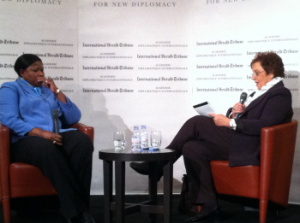
Fatou Bensouda, chief prosecutor for the International Criminal Court, in conversation with Marlise Simons, correspondent for The New York Times.
Onder de titel Rokende spiegel publiceerde Vrij Nederland* op 14 mei 1988 mijn interview met de Nederlandse journaliste Marlise Simons die ik in april van dat jaar sprak in haar toenmalige woonplaats Rio de Janeiro.
Hoewel er inmiddels ruim een kwart eeuw is verstreken is het als journalistiek tijdsdocument en als portret van een bijzondere journaliste nog steeds een goede eerste kennismaking. Bij mijn weten is dit het enige geschreven portret dat van haar is verschenen in Nederland.
Simons woont en werkt vanaf 1989 in Parijs nadat ze jarenlang voor de Washington Post en vanaf 1982 voor de New York Times, Zuid – en Midden – Amerika coverde. Vanuit Parijs deed ze verslag van de oorlogen op de Balkan en van de processen die zijn gevoerd door het Joegoslavië Tribunaal. Samen met Heikelien Verrijn Stuart publiceerde ze in 2009 : The Prosecutor and The Judge: Benjamin Ferencz and Antonio Cassese. Interviews and Writings.
Als één van de weinige vrouwen die zich moeiteloos staande houdt in de machowereld van de internationale schrijvende journalistiek, is ze te vergelijken met een andere heldin van mij, Martha Gellhorn (1908-1998) die ik in 1991 uitgebreid heb gesproken. Ze bedrijven echter twee totaal verschillende stijlen van journalistiek: is Gellhorn persoonlijk en zeer aanwezig in haar verhalen en reportages, Simons is de spreekwoordelijke buitenstaander en de beschouwer.
Marlise Simons’ eerste kennismaking met Latijns-Amerika dateert uit 1967. Na haar studie Engels en Spaans maakte ze op zevenentwintigjarige leeftijd een rondreis van drie maanden door Mexico. Ze raakte ‘zo geboeid door de hoogontwikkelde beschaving, de culturele rijkdom en de bevolking die bijna van een andere planeet afkomstig leek te zijn’ dat ze vier jaar later, vergezeld door collega en latere echtgenoot Alan Riding en een volgeladen ‘oude Volkswagen met boeken, typemachines, pillen en kort- golfapparatuur’ opnieuw naar Mexico vertrok. ‘De grote kranten hadden correspondenten zitten in Buenos Aires en Santiago, maar Midden-Amerika leek in de pers helemaal niet te bestaan. Het was dus niet zo moeilijk om daar aan het werk te komen.’
Ze vestigde zich in Mexico – Stad. Van daaruit bereisde ze het gehele Latijns–Amerikaanse continent en schreef reportages voor NRC Handelsblad, Newsweek, de Washington Post en later de New York Times. Dertien jaar later, in 1984, verhuisde ze naar Brazilië. Voor haar werk ontving ze in 1981, samen met Jacobo Timmerman, de prestigieuze Maria Moors Cabbot Prize, die elk jaar door Columbia University in New York wordt uitgereikt. Na de Pulitzer Prize (waarvoor ze in 1991 werd genomineerd, B.S.) is dit de belangrijkste journalistieke onderscheiding in de Verenigde Staten. Maar ze is de eerste om het belang van deze prijs te relativeren: ‘De journalist als held, zoals mijn collega’s Bernstein en Woodward, is voor mij uit den boze. Of zoals Oriana Fallaci die in 1968 aanwezig was bij de rellen op de Universiteit van Mexico. De volgende dag stond met grote koppen in de krant dat ze een krasje had op haar bil. Dat nieuws was belangrijker dan het leger dat het vuur opende op driehonderd mensen. Een journalist blijft altijd een doorgeefluik. Mij gaat het erom hoe ik de ene cultuur over kan brengen naar de andere, hoe moet je iets duidelijk maken voor de huiskamer in Zutphen?’
Uitgeverij Meulenhoff publiceerde in 1987 onder de titel De rokende spiegel een selectie uit de talrijke artikelen over Latijns–Amerika die Marlise Simons in de afgelopen zestien jaar schreef voor binnenlandse – en buitenlandse bladen. Tezamen geven deze ruim zestig achtergrondverhalen een breed, samenhangend beeld van de Latijns–Amerikaanse cultuur en de politieke – en maatschappelijke ontwikkelingen in de jaren zeventig en tachtig. Van de staatsgreep in Chili tot de teleurgestelde officier in Cuba, van de onderdrukte Indianenstammen in Guatemala tot het uitzichtloze bestaan in de krottenwijken van de grote steden.
Het balkon van het appartement van Marlise Simons in Rio de Janeiro biedt tussen de palmbomen op het strand een fraai uitzicht over de Atlantische Oceaan. Ook de inrichting van het appartement is het aanzien meer dan waard. De liefde die Marlise Simons voor Latijns–Amerika heeft opgevat wordt weerspiegeld in de inrichting van haar woning. Verspreid in de woonkamer staan de beeldhouwwerken die taferelen uit de rijke geschiedenis van Mexico voorstellen en aan de wanden hangen houtsnijwerken en fel gekleurde schilderijen uit Haïti.
Aan het begin van het gesprek excuseert ze zich voor het feit dat door haar jarenlange verblijf in het buitenland haar Nederlands achteruit is gegaan. Haar artikelen voor NRC Handelsblad worden uit het Engels vertaald. Wel klinkt nog zacht haar Limburgse accent door.
Is het voor een vrouwelijke journalist in dit continent moeilijker werken dan voor een man?
‘Er zitten twee kanten aan. Enerzijds voelen mannen zich minder bedreigd door een vrouwelijke journalist. Militairen vertellen je bijvoorbeeld dingen die ze niet aan mannen zouden vertellen. Een vrouw willen ze helpen en beschermen. Ze zijn nieuwsgierig. Aan het begin van de jaren zeventig was er in Latijns–Amerika veel minder ruimte voor een vrouw. Men wilde wel eens weten wat voor vreemd iemand ze voor zich hadden en men wilde dus wel praten. Anderzijds kun je als vrouw niet met mannen optrekken zoals mannen met elkaar omgaan en een pilsje gaan drinken. Maar als je buitenlandse bent dan worden de spelregels ineens anders. Wat ze van hun eigen vrouw niet zouden tolereren, dat kan van een buitenlandse wel.’ Read more
David in Ethiopia
David van Reen (1969 – 2015)
Boeken:
Anbessa’s dochter (Uitgeverij In de Knipscheer – 2016 – ISBN 9789062659302)
Het land van de verbrande gezichten (De Geus -2008 – ISBN 9789071794056)
Engelen der wrake (De Geus – 2009 – ISBN 9789044512977)
Zie ook: http://stichtinglalibela.nl/
“Op een van mijn reizen kwam ik in Woldia. Ik besloot om een wandeling te maken naar de Maryamkerk, een eind buiten het stadje. De heenweg bergop was ongeveer zes kilometer. Halverwege kwam ik een meisje tegen dat Netsannet heette. Haar naam betekent ‘vrijheid’. Gezien de blik in haar ogen zou ze geen passender naam kunnen hebben. Ze had een blikje bij zich met daarin een beetje stro en een paar eieren. Op mijn vraag wat ze met die eieren ging doen, zei ze dat ze naar de markt in Woldia ging. Ik vroeg haar waar ze woonde. Dat bleek dicht bij de Maryamkerk te zijn. Ik was verbaasd. Ze liep twaalf kilometer om twee eieren te verkopen! Haar optimisme en de levensvreugde die ze uitstraalde, maakten indruk op me. Toen ik later de foto’s die ik van Netsannet had gemaakt, afdrukte en weer zag hoe levensblij ze was, begon ik me pas af te vragen waarom wij hier op aarde zijn en of het jachtige leven dat wij westerlingen leiden, ons wel gelukkiger maakt dan Ethiopiërs. Zo ben ik met andere ogen naar deze mensen gaan kijken. Eerder al had het land me verrast door zijn schoonheid en zijn vriendelijke mensen.”
Uit: Het land van de verbrande gezichten. Leven in Ethiopië, foto’s en tekst van David van Reen, Uitg. De Geus
Bob van Huet ~ De man achter de generatietheorie
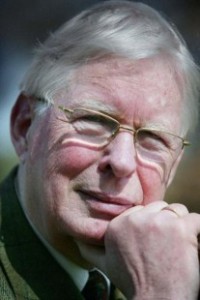 Driekwart van de Nederlanders rekent zichzelf tot een generatie. We kennen ze allemaal. De Stille Generatie zorgde voor de wederopbouw van Nederland na de Tweede Wereldoorlog. De Protest Generatie ontdeed het land van zijn grauwsluier. Voor al die leuke Babyboomers-experimentjes betaalde de Verloren Generatie de prijs. En dan komen er computers en komt de Grenzeloze Generatie in vol beeld.
Driekwart van de Nederlanders rekent zichzelf tot een generatie. We kennen ze allemaal. De Stille Generatie zorgde voor de wederopbouw van Nederland na de Tweede Wereldoorlog. De Protest Generatie ontdeed het land van zijn grauwsluier. Voor al die leuke Babyboomers-experimentjes betaalde de Verloren Generatie de prijs. En dan komen er computers en komt de Grenzeloze Generatie in vol beeld.
Wie heeft dat eigenlijk bedacht, al die rake typeringen van onze generaties? Daar staat hij, Henk Becker (1933), de grondlegger van het vaderlandse generatieonderzoek. Een kwart eeuw geleden publiceerde deze wereldwijd bekende socioloog zijn standaardwerk ‘Generaties en hun Kansen’. De manier waarop hij de Nederlanders indeelde en typeringen meegaf als Verloren Generatie (geboren tussen circa 1970 en 1985) of Grenzeloze Generatie (geboren tussen 1985 en 1995) geldt nog altijd als basis van het onderzoek naar toekomstige trends.
Lees verder: http://www.ad.nl/de-man-achter-de-generatietheorie/
